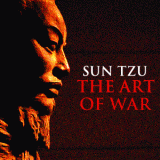For most of their history walls have been used as a cheap method of control. Their popularity increased in the middle ages with the development of castle architecture in the Crusader kingdoms. The reason for the developments at that particular time and place were that the architecture allowed for the defence of large tracts of land with relatively low numbers of military.
Castles and walls began a period of decline with the development of efficient artillery. As a form of true defence the end of the large-scale fortification came with the vast defence system of the Maginot Line. Its uselessness was demonstrated when the invading army simply moved around the defences.
The wall that symbolises my generation is the Berlin wall. A structure designed to prevent attacks but in reality was there to prevent citizens of the east from defecting to the west. This east-west mentality was the hegemonic worldview until a whole world watched in utter amazement when the citizens of Berlin lost their fear of the wall and began to ignore it as a barrier, hit it with hammers and slowly wear it down. As it turned out the wall was an illusion â?? only powerful as long as everyone agreed it was an impenetrable barrier. When the illusion was lost the wall fell.
With the loss of this wall an odd idea took form. We are a world without such walls. Since the symbol of division was lost we began to think that there were no more divisions. But this is wrong. The wall has never been destroyed. Even though some concrete in Germany was removed.
Spain
Three lines of defensive fences have been built around the Spanish enclaves in Africa (Ceuta & Melilla). the purpose of these fences is not to defend these contested pieces of Spanish rule on the African continent but more to prevent immigrants from attempting to enter Spain (and the EU).
Morocco
The Moroccan Wall is a 2,720 km-long system of defensive walls/berms, running mainly through Moroccan-controlled Western Sahara. It is dubbed The Wall of shame by the Polisario Front and other Sahrawi independence-seekers. It consists of sand and stone walls about three meters in height, with bunkers, fences and landmines throughout.
Israel & West Bank
The Israeli West Bank barrier is arguably the most publicised wall at present. It consists of a network of fences with vehicle-barrier trenches surrounded by an on average 60 meters wide exclusion area (90%) and up to 8 meters high concrete walls (10%). It is located partly within the West Bank, partly along the border between the West Bank and Israel proper.
Italy
Serenissima is a suburb to the Italian city of Padua. It sounds idyllic. Translated it means something like the most serene. Padua is known for its great art and the university, where Galileo was once a professor of mathematics. But this romanticised image is far from the truth. Serenissima is a place filled to the brim with social problems, illegal immigrants, drugs & prostitution. Last month riots, described as pitched battes, broke out between the residents of Serenissima and the police.
An attempt to resolve this has been taken. Not a large scale attempt to deal with the social and economic problems in the area. The solution is a barrier.
A large and ugly barrier has been erected to help protect local residents from the run-down apartment blocks, largely filled with immigrants. Stretching for 84 metres, three metres high and made of thick steel panels, there is a police checkpoint at the entrance as well as CCTV camerasâ?¦The barricade has already been dubbed Paduaâ??s Berlin wall and has reignited a debate about how to treat foreign migrants. (The Guardian).
These examples are not intended to provide a full list. We create walls and barriers of segregation all around ourselves. From gated communities to national defence systems we create and implement technological systems (not always particularly high-tech) to efficiently segregate and control populations.






